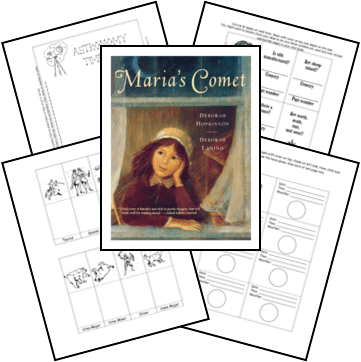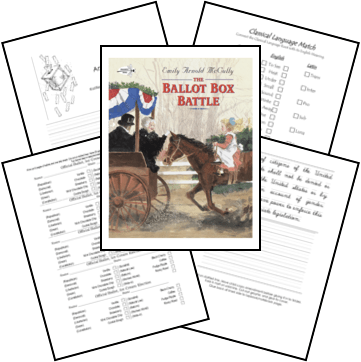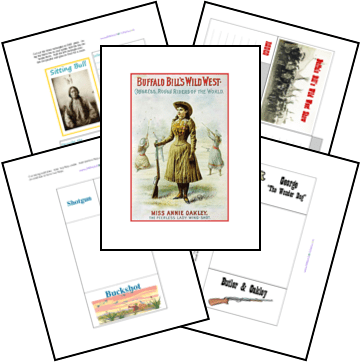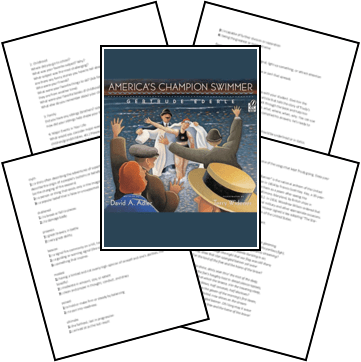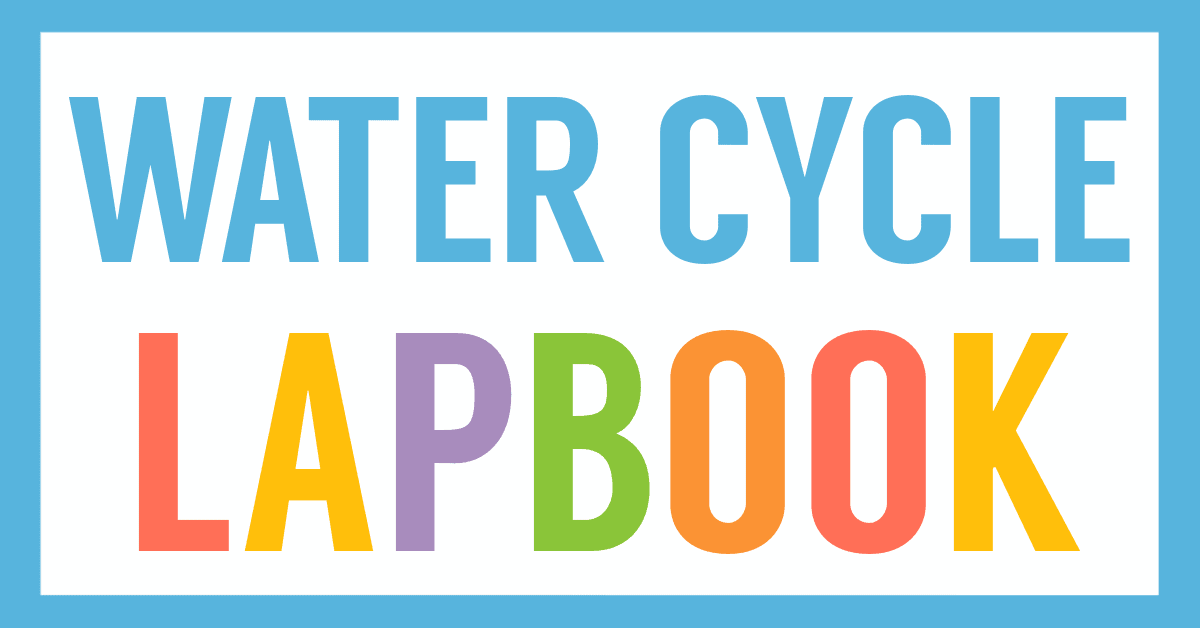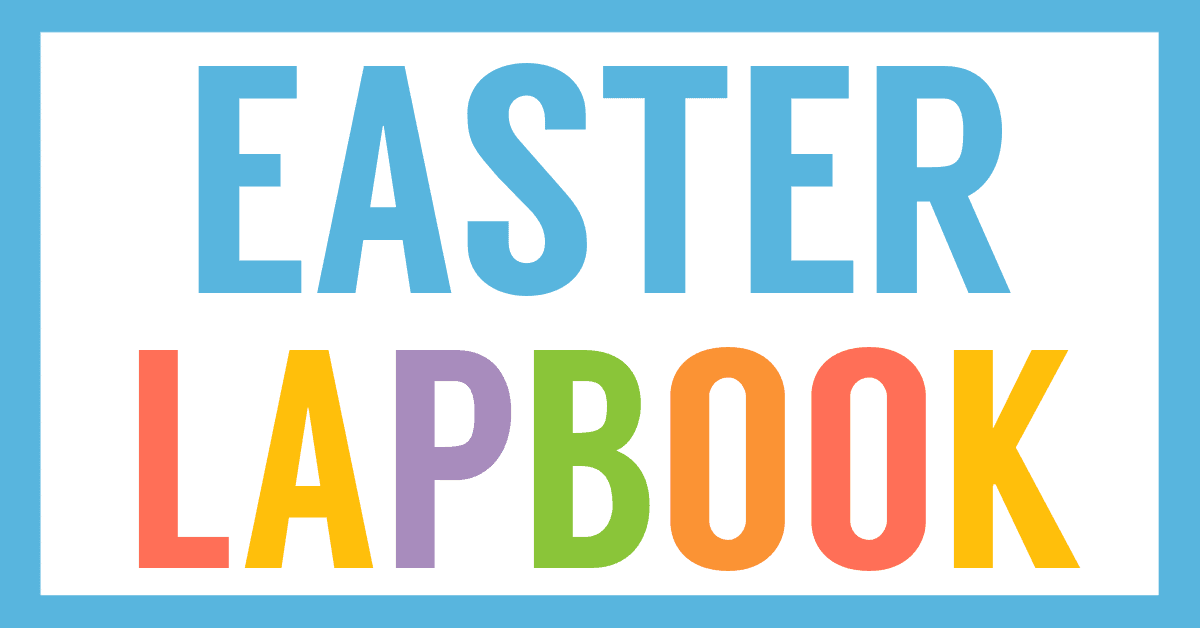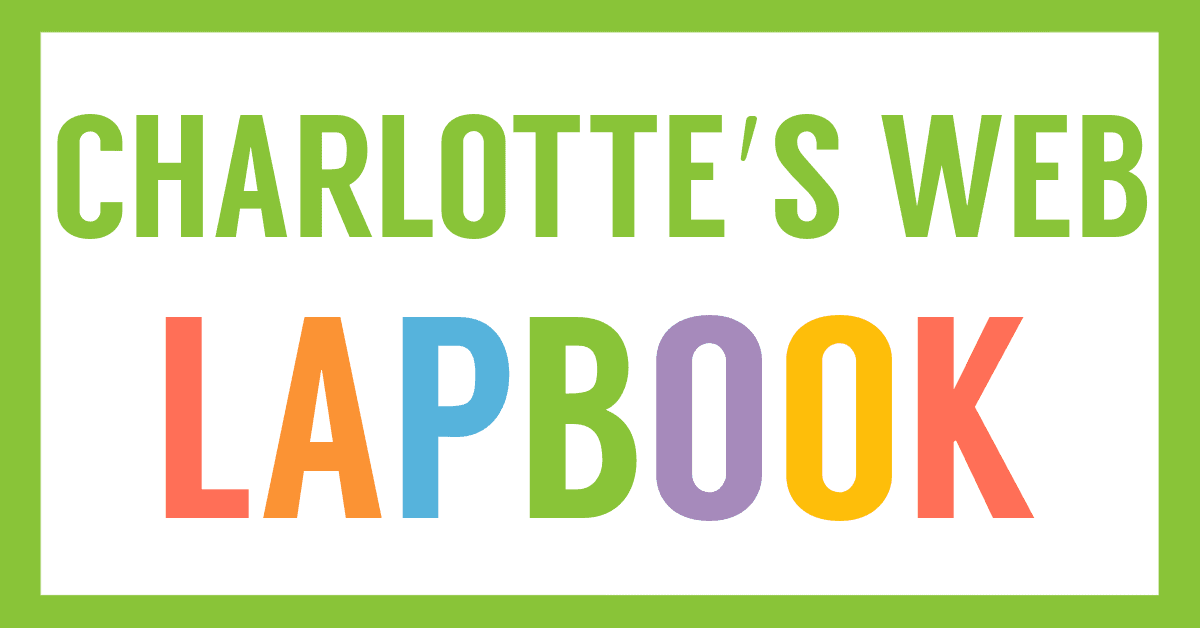Affiliate Disclaimer
We sometimes use affiliate links in our content. This won’t cost you anything, but it helps us to keep the site running. Thanks for your support.
This unit study includes lessons and printables based on the book Maria’s Comet by Deborah Hopkinson.
Maria’s wish burns as brightly as a star.
Maria longs to be an astronomer and imagines all the strange worlds she can travel to by looking though her papa’s telescope. One night Maria gets her chance to look through the telescope. For the first time, she sees the night sky stretching endlessly above her, and her dream of exploring constellations seems close enough to touch.
Thanks to Wende for writing the lessons and preparing the printables for this Maria’s Comet unit study.
Maria’s Comet Unit Study Lessons
Here are some sample lessons from the Maria’s Comet Unit Study.
Living in a Whaling Village (Nantucket) – Maria’s family lived in Nantucket, a small island off the south east coast of Massachusetts. While Nantucket is now used mostly as a summer vacation spot, during the 1800’s it was a very prosperous whaling village. By 1835, large fleets of ships were sent out from Nantucket to as far away as the Pacific Ocean off the coast of Alaska to hunt whales. These voyages often lasted three or more years.
Most of the people living in Nantucket in some way depended on the whaling industry for their livelihood. The whales were used to meet the high demand of whale oil, the chief illuminant of the day. When he first married Maria’s mother, Mr. Mitchell worked for his father to convert a shipload of whale oil into soap. Later, he was an astronomer for the United States Coast Survey, helping the whaling ships to navigate and predict weather patterns. And like Andrew, Maria’s brother, many a young male sailed off on the whaling ships as a cabin boy.
As you read through Maria’s Comet, make note of all the details characteristic of living in a whaling town. Examine the double spread title page, with the ships coming and going, and the lighthouse to show the sailors the way. Look at the observatory, overlooking the sea. Read of Maria’s uncle who owned a whaling boat, the sea chest in the attic, and the whale oil lamps the family used. As the sale of petroleum-based oils took the place of whale oils, whaling greatly decreased. Nantucket is still rich in nautical history, with stately captain’s houses and fishing shanties, and it was depicted in Herman Melville’s classic novel Moby Dick. A good go-along easy reader about whales and the effects of whale hunting is I Can Read About Whales and Dolphins by J.I. Anderson. If desired, rabbit trails can be taken to further study whales.
Science: Comets
As a child, Maria Mitchell dreamed of discovering a comet, and as an adult she did just that! While they did not know what comets were made of in the 1800’s, we now know that they are masses made up of gas, rocks, and pieces of ice, kind of like dirty snowballs. They are often larger in size than Jupiter. The three major parts of a comet are its nucleus (the small solid core), coma (the cloud of gas and dust that surrounds the nucleus), and fiery tail(s) (the glowing ionized gas trailing behind the comet). They circle around the sun, and as they get close to the sun, some of the ice melts. The water then vaporizes and blows behind the comet from solar winds, giving the comets an appearance of having a tail. Comets orbit around the sun very slowly, with the tails always pointing away from the sun, and are rarely seen on earth. Telescopic comets are those that can only be seen with a telescope, not with the naked eye.
Often, a comet is named after the first person to discover it. Edmund Halley saw a comet in 1682, and predicted its return every 76.5 years. The most famous of comets, Halley’s comet will be seen again in 2061. The second most famous comet is Encke’s Comet, which was found and predicted by German astronomer Johann Franz Encke in 1786. The first comet of the 19th century was simply called the “Great Comet of 1811” due to its tail that extended 100 million miles! And in 1847, Maria Mitchell spotted a comet that at the time was named “Miss Mitchell’s Comet.”
Throughout history, people looked at comets as landmarks for notable events. A comet was present in 44BC upon the death of Julius Caesar. The Black Death struck 90,000 people of London during the sighting of the Great Comet of 1665. Napoleon Bonaparte used the appearance of comets as his personal guides to conduct battle. And, both the birth and death of Mark Twain occurred under Halley’s comet.
You can grab a copy of the entire Maria’s Comet Unit Study and Lapbook in an easy-to-print file at the end of this post.
Maria’s Comet Lapbook Printables
In addition to the unit study, this file also includes these mini-book and printables for your student to create a Maria’s Comet lapbook or notebook:
- Massachusetts Map Shutterfold
- Letter Cards for “AR” Words
- Atlas Scavenger Hunt Mini-book
- My Trip Stationery Page & Pocket
- Branches of Science Flap Book (physical sciences & biological sciences)
- Maria’s Childhood vs. My Childhood Venn Diagram Flap Book
- Comets Envelope Fold
- Constellations Matchbooks & Cover Book
- Famous Astronomers Cards & Pocket
- The Hardest Step Compressed Triangle
- Maria Mitchell Quotes Mini-book
- Moon Phases Mini-book
- Parts of a Comet Mini-book
- Planets Flap Book
- Quakers Mini-book
- And more!
How to Get Started with Your Maria’s Comet Unit Study & Lapbook
Follow these simple instructions to get started with the Maria’s Comet Unit Study:
- Buy a copy of the book, Maria’s Comet, or borrow one from your local library.
- Print the Maria’s Comet unit study.
- Choose the lessons you want to use with your student (a highlighter works great for this).
- Choose and prepare the lapbook printables you want to use with your student.
- Enjoy a week of learning with Maria’s Comet.
Get Your Free Maria’s Comet Unit Study & Lapbook
Simply click on the image below to access your free Maria’s Comet Unit Study and Lapbook.

